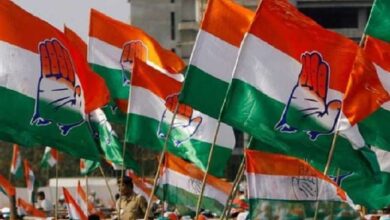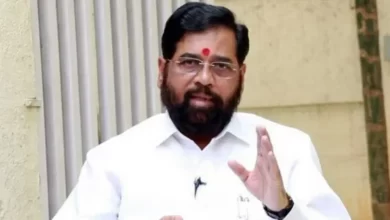Banking Sector Challenges

There are two types of challenges before the banking sector of the country – internal and external.
Saroj Kumar
At present, twelve government banks are reaching about eighty percent of the people through more than eighty six thousand branches and twenty two private banks with more than twenty eight thousand branches. There are also dangers of sinking of private banks. The story of Yes Bank and Lakshmi Vilas Bank is not very old. Banks play a big role in strengthening the economy of the country. Strengthening of banks is an essential condition of the economy. Over the years this condition has emerged as a mandatory question. Questions are constantly being raised about the crisis in the banking sector and the situation arising out of the epidemic has made these questions more serious. The big question right now is how will a troubled banking system handle the impending challenges?
There are two types of challenges before the banking sector of the country – internal and external. If there are no internal challenges, then the external challenges of modern banking will be easily tackled by the banks. But internal challenges are troubling banks, especially public sector banks. The challenge of bad loans i.e. Non-Performing Assets (NPA) before the banks is standing like a rock. Reserve Bank of India (RBI) data shows that as of March 31, 2021, banks’ assets worth Rs 8.34 lakh crore were NPAs. The RBI’s Financial Stability Report, released in December 2021, suggests that the gross non-performing assets (GNPA) ratio of scheduled commercial banks will rise to 8.1 per cent by September 2022, from 6.9 per cent in September 2021. In stressful situations, it can even go up to 9.5 percent. This is worrisome.
NPA is a disease which is destroying the banks like termites. If the loan given is returned with interest within the stipulated time, then banks can meet all the challenges of modern banking like technological infrastructure development and skill development on the strength of their economic strength. But this has not been happening for a long time. The story of NPAs, which started during the recession of 2008, has reached the banks of the banks. First eight banks merged, now there is a privatization exercise. Banks are a loss deal in the eyes of the government due to NPAs. The RBI data shows that the gross NPAs which were around Rs 5 lakh crore from 2008-09 to 2013-14 increased to Rs 18.28 lakh crore during the period from 2014-15 to 2019-20. This jump in NPAs is about three hundred and sixty five percent.
The measures adopted by the government and RBI to resolve NPAs during this period only caused loss to the banks instead of profit. Measures like the Strategic Debt Restructuring Plan 2015, the Insolvency and Bankruptcy Code (IBC) 2016, merger of state-run banks and setting up of bad banks brought down the NPA figures, but the banks had to pay a heavy price. Of course, the government also took steps like recapitalization of banks, but it was a camel’s cumin in comparison to the capital loss in the NPA resolution process.
Ninety thousand crore rupees in the financial year 2017-18, one lakh six thousand crore rupees in 2018-19, seventy thousand crore rupees in 2019-20, twenty thousand crore rupees in 2020-21 and 20 thousand crore rupees in 2021-22. banks, which is much less than the amount which has sunk into NPAs. Due to the measures adopted by the government, the NPAs have come down to Rs 8.34 lakh crore by March 2021. Of this, Rs 6,16,616 crore was from public sector banks. According to a written reply given by the Minister of State for Finance Dr. Bhagwat Karad in Parliament in December 2021, in September 2021, an amount of Rs 5,40,442 crore of public sector banks was NPA.
That is, between March and September, NPAs worth Rs 76,174 crore were resolved. How much of this amount was returned to the banks, or what was the rate of recovery, is not available. It is important to know here that in 2014, the assets of public sector banks were only Rs 2,24,542 crore as NPAs. Bank assets being NPAs is a big loss, but even the resolution of NPAs has not been particularly profitable. By way of settlement, only a nominal amount is returned to the banks. The Minister of State for Finance, in his reply in December 2021, had said that during the last seven financial years, Rs 5,49,327 crore of NPAs of public sector banks were recovered. But he did not specify the rate of recovery.
The NPA recovery rate can be gauged from the Financial Stability Report of the RBI. The report said that between September 2019 and September 2021, the average rate of recovery in 60 cases of corporate debt settled under the IBC was 24.7 per cent. That is, in this 75.3 percent of the amount given in the loan by the banks was sunk. The modern name of this loss in the language of economy is ‘haircut’. Now guess how much ‘haircut’ would have happened in the recovery of Rs 5,49,327 crore! In many cases, the average haircut ranges from eighty to ninety percent. In such a situation, what business can be run by spending a hundred rupees and earning ten rupees?
The NPA game is more with the public sector banks. Because they have to fight in every risk. In this game the banks are becoming poor and the players of the game are rich. The problem is that the government is now trying to get rid of the banks on the pretext of reforms. It wants to distance itself from the accountability of public deposits. The same is true of privatization after the merger of banks. Privatization is a new challenge before the public sector banks. The government wants a constitutional amendment to reduce its stake in public sector banks from fifty-one per cent to twenty-six per cent. NITI Aayog has already recommended privatization of two banks and one insurance company. The question arises if the management of banks goes into private hands, what will be the direction of the economy. Will private banks be able to do what public sector banks have helped in dealing with economic challenges in a risky environment?
One argument here is that not all public sector banks will go into private hands. But how long will this argument last once privatization is enacted? If banks go private, will the current model of access to banking services in the country survive? At present, twelve government banks are reaching about eighty percent of the people through more than eighty six thousand branches and twenty two private banks with more than twenty eight thousand branches. There are also dangers of sinking of private banks. The story of Yes Bank and Lakshmi Vilas Bank is not very old. State Bank of India had to put its hand to rescue Yes Bank. The nationalization of banks was done because of all these concerns. An RBI report between 2006 and 2008 states that after independence, between 1947 and 1955, banks were sunk three hundred and sixty-one times and the hard earned money of the public deposited in them was also sunk.
Today there are twelve public sector banks, twenty two private banks, forty-six foreign banks, fifty-six regional rural banks, one thousand four hundred and eighty-five urban cooperative banks, and ninety-six thousand rural cooperative banks besides cooperative credit institutions operating in the Indian banking system. There are more than two lakh ATMs. Despite this, the loan is not accessible as per the requirement. There is a credit shortfall of Rs 25.8 lakh crore for the MSME sector alone. With the expansion of population and economy, the demand is going to increase further. The direction of banking reform should be in this direction.
,






